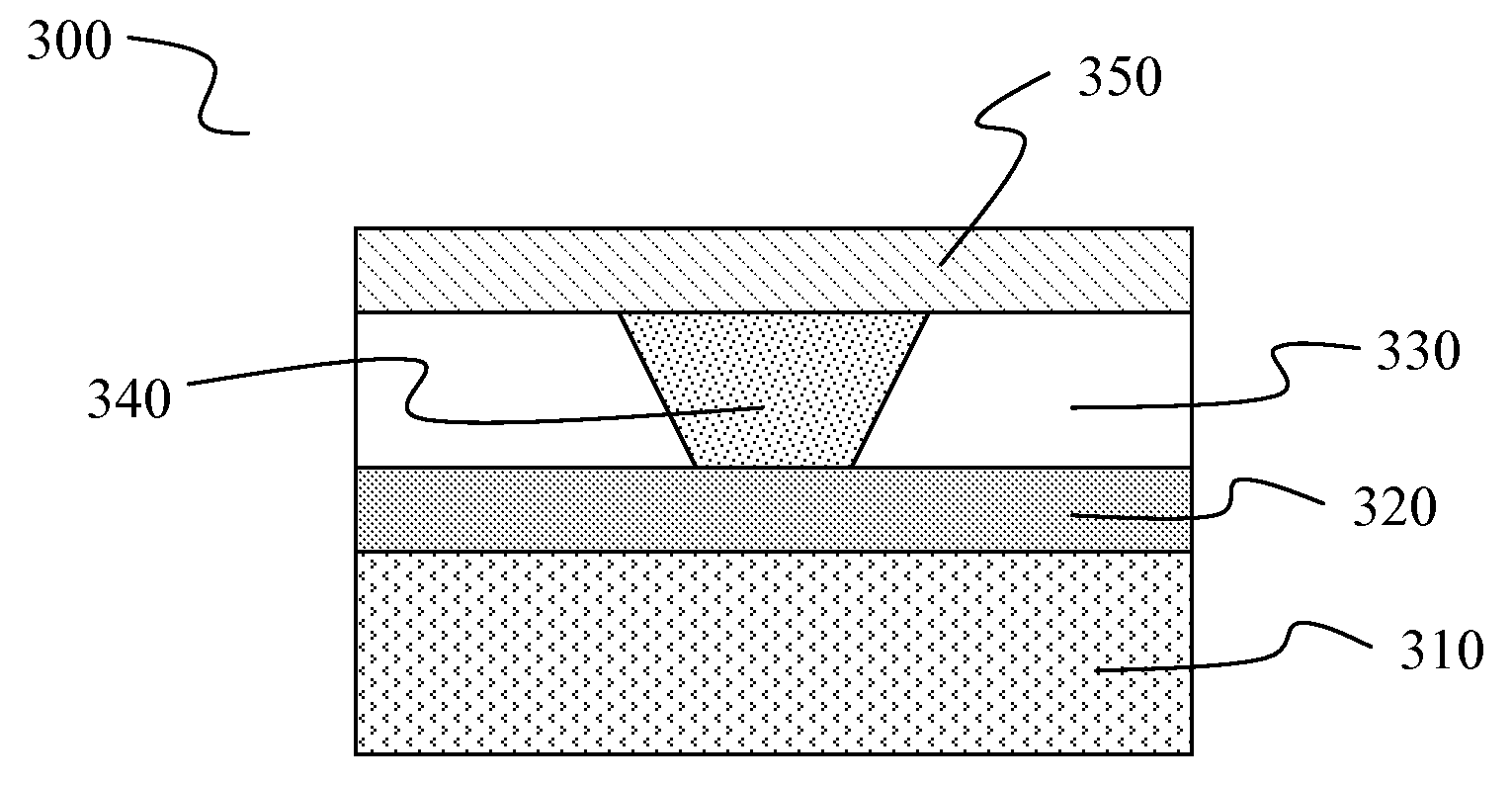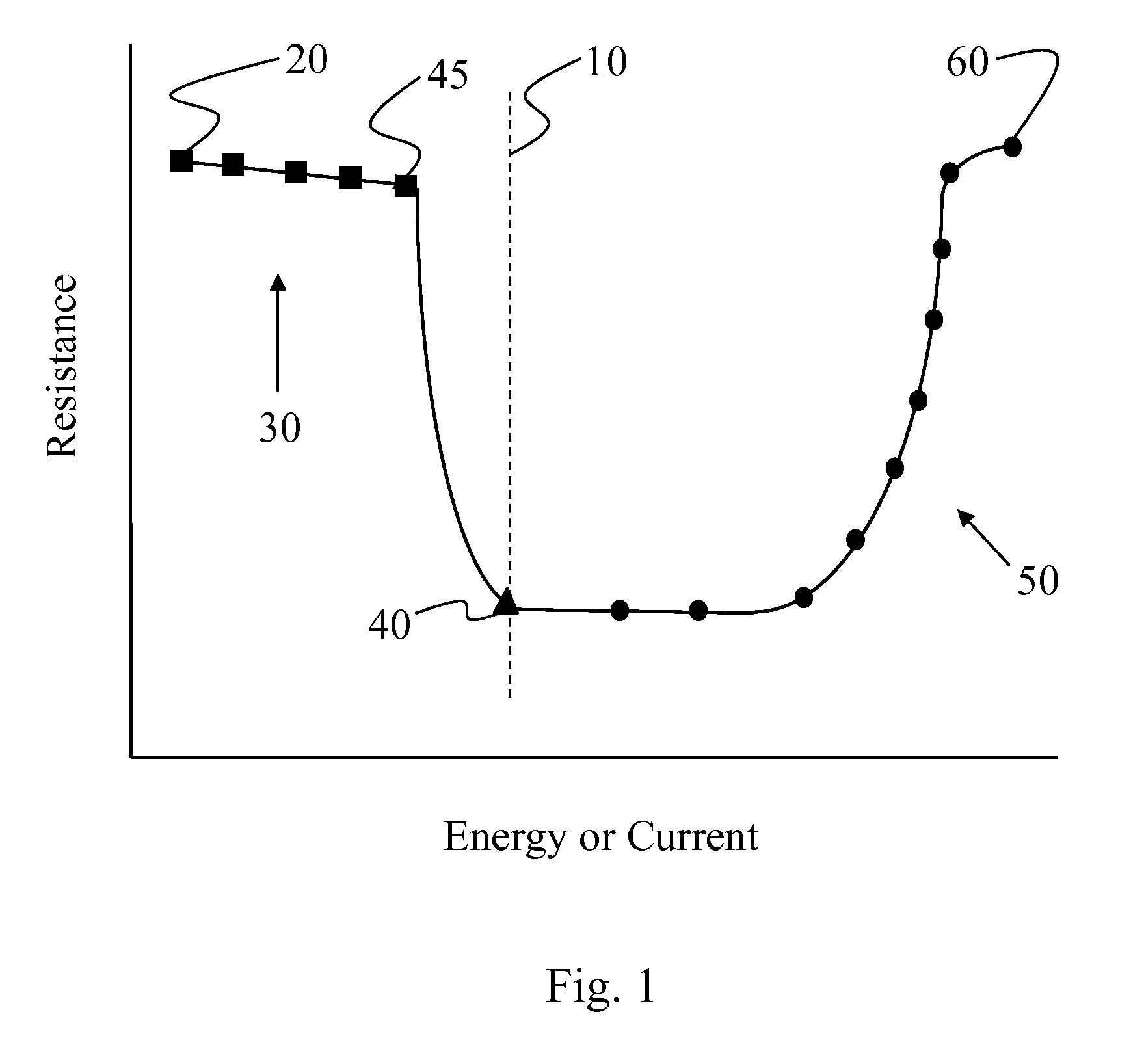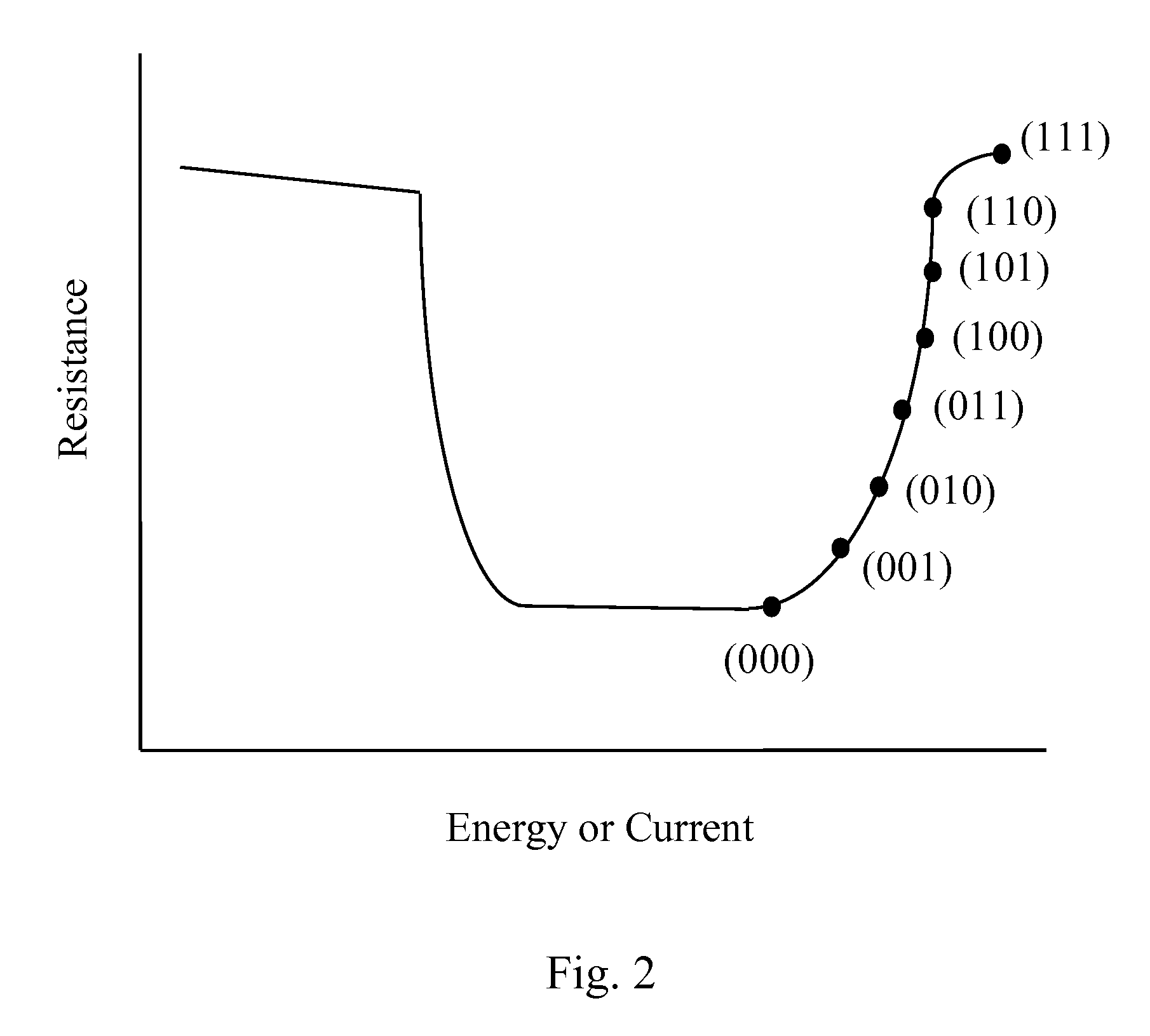High Margin Multilevel Phase-Change Memory via Pulse Width Programming
a phase-change memory and pulse width technology, applied in the field of phase-change memory material programming, can solve the problems of limited progress toward achieving a practical multi-level phase-change memory, reproducibility is particularly difficult, and the resistance of the programmed state is becoming increasingly difficult to employ, so as to achieve fine control of the crystalline-amorphous structural transformation, increase the number of practical programming states, and control the resistivity of the programmed state.
- Summary
- Abstract
- Description
- Claims
- Application Information
AI Technical Summary
Benefits of technology
Problems solved by technology
Method used
Image
Examples
example i
[0062]In this example, the effect of pulse width on the programmed resistance of a phase-change device having a lower electrode with low resistivity is described.
[0063]FIG. 5 depicts a typical phase-change memory device 100 that includes base wafer 110, dielectric buffer 120, lower electrode 130, conductive line 140, dielectric 150, phase-change material 160, dielectric 170, upper electrode 180, and conductive line 190. Conductive lines 140 and 190 receive and deliver electrical signals to surrounding circuitry and may, for example, be a word line and a bit line of a memory device in an array. In device 100, current is delivered from an external device through conductive line 140 and lower electrode 130 to phase-change material 160 and upper electrode 180 and conductive line 190. Phase-change material 160 has the composition Ge2Sb2Te5. The direction of current flow in device 100 is generally vertical between the portion of lower electrode 130 in contact with phase-change material 16...
example ii
[0069]In this example, the effect of pulse width on the programmed resistance of a phase-change device having a lower electrode with high lateral resistivity is described.
[0070]FIG. 7 shows a device structure 200 utilizing a lower electrode having a high resistance to lateral flow of electrical or thermal energy. Device 200 includes base wafer 205, conductive line 210, lower electrode 215, and dielectric 220 having an opening formed therein. Breakdown layer 225 and phase-change material 230 are formed within the opening. Phase-change material 230 is also formed over the opening and on dielectric 220. Device 200 further includes upper electrode 235, metal layers 240 and 250, surrounding dielectric 245, and conductive line 255. Phase-change material 230 has the composition Ge2Sb2Te5 and breakdown layer 225 is a thin insulating layer (having a thickness of ˜10-30 Å).
[0071]In device 200, current is delivered from an external device through conductive line 210 to lower electrode 215 and ...
example iii
[0078]In this example, the effect of programming pulse width on the resistance of a device in accordance with the instant invention is described. The device is shown as device 300 in FIG. 9. Device 300 includes base wafer 310, lower electrode 320, phase-change material 340 positioned within an opening of surrounding dielectric 330, and upper electrode 350. Phase-change material 340 is Ge2Sb2Te5. In device 300, current is delivered from an external device through a conductive line connected to lower electrode 320 and continues through phase-change material 340 to upper electrode 350.
[0079]Lower electrode 320 is an intermediate resistivity form of TiAlN obtained by annealing TiAlN at 400° C. The resistivity of the annealed electrode material is ˜3-6 mΩ-cm. Other electrode materials (e.g. TiSiN, TiW, TiN, MoN, nitrogenated carbon) provide a resistivity in a range providing the benefits of the instant invention if annealed to a temperature appropriate for the material. The resistivity o...
PUM
 Login to View More
Login to View More Abstract
Description
Claims
Application Information
 Login to View More
Login to View More - R&D
- Intellectual Property
- Life Sciences
- Materials
- Tech Scout
- Unparalleled Data Quality
- Higher Quality Content
- 60% Fewer Hallucinations
Browse by: Latest US Patents, China's latest patents, Technical Efficacy Thesaurus, Application Domain, Technology Topic, Popular Technical Reports.
© 2025 PatSnap. All rights reserved.Legal|Privacy policy|Modern Slavery Act Transparency Statement|Sitemap|About US| Contact US: help@patsnap.com



